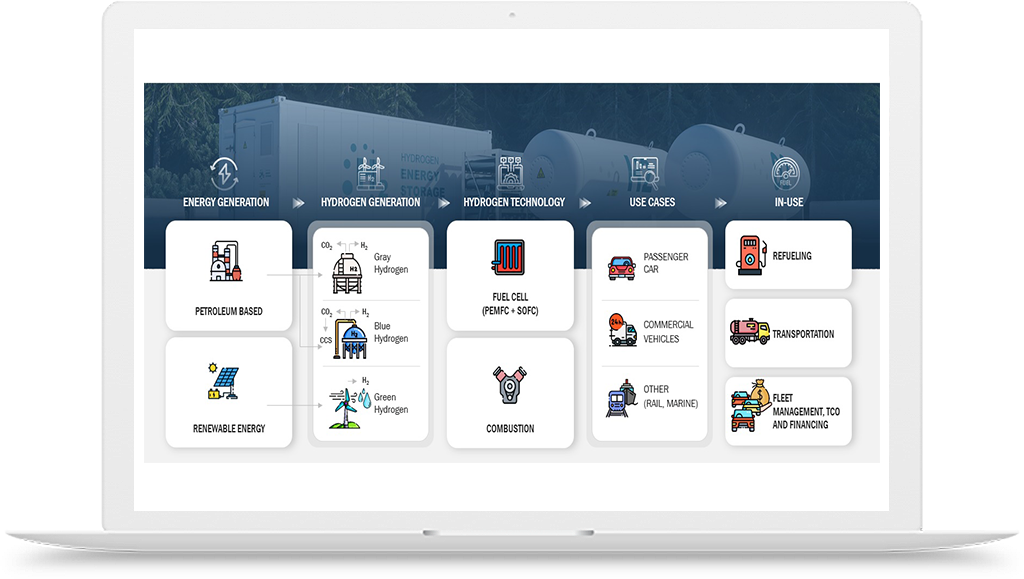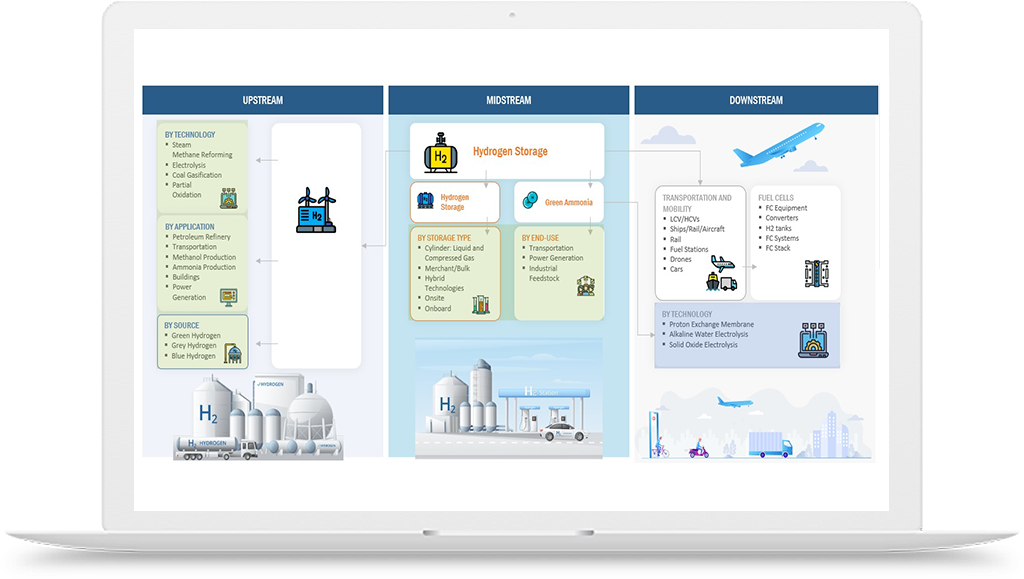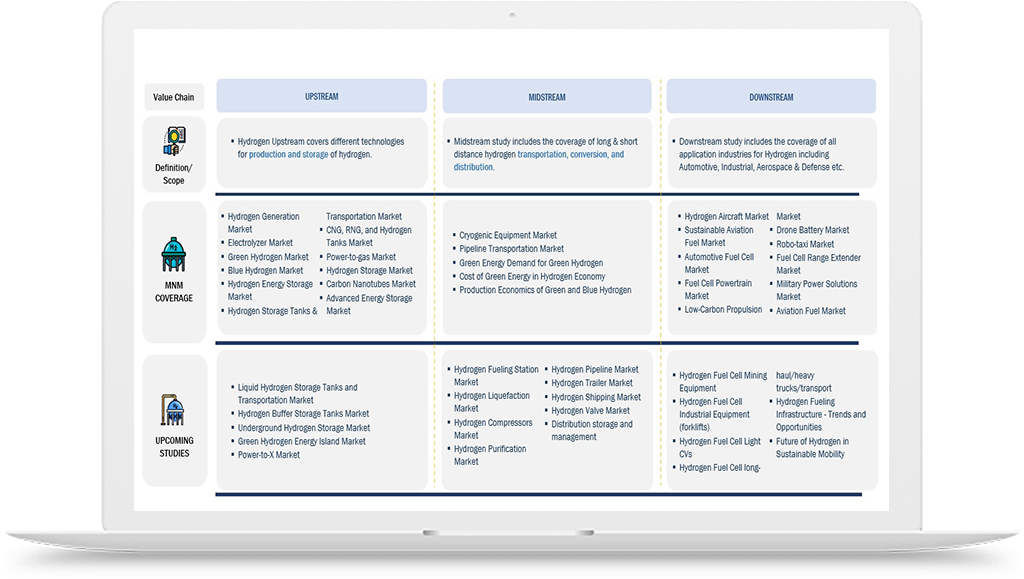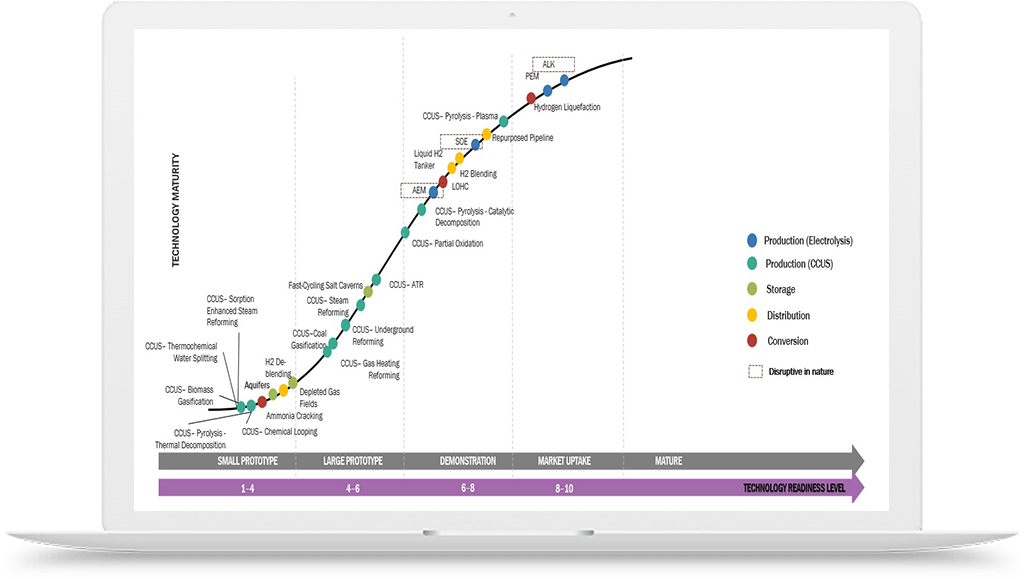Hydrogen Integration Strategies
Backward and Forward Hydrogen Integration Strategies
Utilizing both forward and backward integration tactics, a number of significant players in the hydrogen industry are enhancing their standing in the value chain and gaining market share. Expanding into downstream activities or end-user markets is the goal of forward integration, whereas backward integration entails obtaining or managing the production of inputs or raw materials.
The plans and methods used by people, businesses, and governments to successfully integrate hydrogen into different economic sectors are referred to as hydrogen integration strategies. In order to alleviate energy-related issues, lower carbon emissions, and advance sustainable development, these methods aim to take advantage of hydrogen's qualities as a clean and adaptable energy carrier. Strategies for integrating hydrogen involve a variety of tasks, such as manufacturing, storing, shipping, and final uses.
Here are some examples of companies implementing these strategies:
Backward Integration:
- Plug Power: Acquiring United Hydrogen Group Inc. is a step toward backward integration for Plug Power, a prominent supplier of hydrogen fuel cell solutions. Plug Power is now able to vertically integrate into the hydrogen manufacturing process thanks to this acquisition. Plug Power has been able to obtain a dedicated supply of hydrogen for its fuel cell systems because to United Hydrogen's operation of a hydrogen production facility that uses steam methane reforming and electrolysis.
- Air Liquide: An international provider of industrial gas, Air Liquide has invested in technologies for producing hydrogen as part of a backward integration effort. They have created exclusive electrolysis methods to create hydrogen from water utilizing renewable energy sources, such as Alkaline Electrolyzers and Proton Exchange Membrane (PEM). Through vertical integration with hydrogen production, Air Liquide guarantees a sustainable and safe hydrogen supply for a range of uses in industrial, energy, and mobility.
Forward Integration:
- Hyundai Motor Group: Major carmaker Hyundai is creating a comprehensive hydrogen ecosystem as part of its forward integration strategy. The hydrogen infrastructure is being actively expanded, and they have developed hydrogen fuel cell electric vehicles (FCEVs) as the Hyundai NEXO. In order to provide fuel cell electric trucks as a service, Hyundai has also established a joint venture known as Hyundai Hydrogen Mobility (HHM). Hyundai is offering a comprehensive solution for commercial vehicles with zero emissions through its vertical integration into the mobility and transportation sector through HHM.
- NEL ASA: By growing into hydrogen refueling infrastructure, Norwegian hydrogen business NEL ASA is concentrating on forward integration. NEL is engaged in hydrogen refueling station design, research, and production. The market for hydrogen fuel cell vehicles is growing because to NEL's turnkey solutions, which make it possible to construct hydrogen fuelling networks. With their widespread deployment, NEL's stations help to progress the infrastructure for hydrogen.
Hybrid Integration:
- Siemens Energy: Siemens Energy is a multinational energy technology firm that combines forward and backward integration in a hybrid integration technique. They now provide hydrogen gas turbine and electrolysis technology as part of their diversified portfolio. Green hydrogen may be produced by Siemens Energy using their electrolysis technologies, and using hydrogen as a sustainable energy source is made easier by their hydrogen gas turbines. Siemens Energy is able to provide integrated solutions for power generation, storage, and hydrogen production because of this hybrid integration strategy.
- Linde plc: As part of its hybrid integration plan, Linde plc, a prominent industrial gas firm, is producing and distributing hydrogen. Linde uses a variety of techniques, including as steam methane reforming, to run large-scale hydrogen production facilities. They also possess a vast infrastructure network for distributing hydrogen, which includes pipelines and other transportation tools. Because of their hybrid integration, Linde is able to supply hydrogen to a variety of end customers with a dependable supply chain.
These instances show how businesses in the hydrogen industry are utilizing forward and backward integration tactics to bolster their market position, maintain supply chain management, and extract value at various points along the value chain. These tactics encourage the use of hydrogen as a clean energy source and aid in the creation of all-encompassing solutions.
















